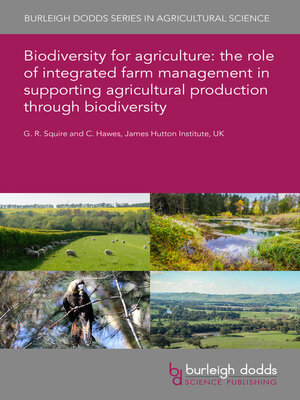Biodiversity for agriculture
ebook ∣ the role of integrated farm management in supporting agricultural production through biodiversity · Burleigh Dodds Series in Agricultural Science
By Professor G. R. Squire

Sign up to save your library
With an OverDrive account, you can save your favorite libraries for at-a-glance information about availability. Find out more about OverDrive accounts.
Find this title in Libby, the library reading app by OverDrive.



Search for a digital library with this title
Title found at these libraries:
| Library Name | Distance |
|---|---|
| Loading... |
Agricultural holdings vary widely in size, management and produce, but all rely on biodiversity to mediate the ecological processes that determine economic output and sustainability. Extractive agriculture has degraded farms globally, but regeneration can be achieved by encouraging living organisms to re-build ecosystem stores (such as soil organic matter), regulate nutrient cycles and reduce wastage. This chapter examines the principles by which integrated farm management acts to use and cycle energy and matter over time and between different farming activities. Management interventions (e.g., agronomy, choice of crop) act to regulate channels for the flow of energy and matter in a 'chain of effect' through living organisms and ecological processes to achieve high-level goals such as ecosystem services. Safe limits or ranges are defined in which each population or process can operate sustainably. Lessons from historical and current integrated practice are combined with international guidelines into a methodology for integrated management.







